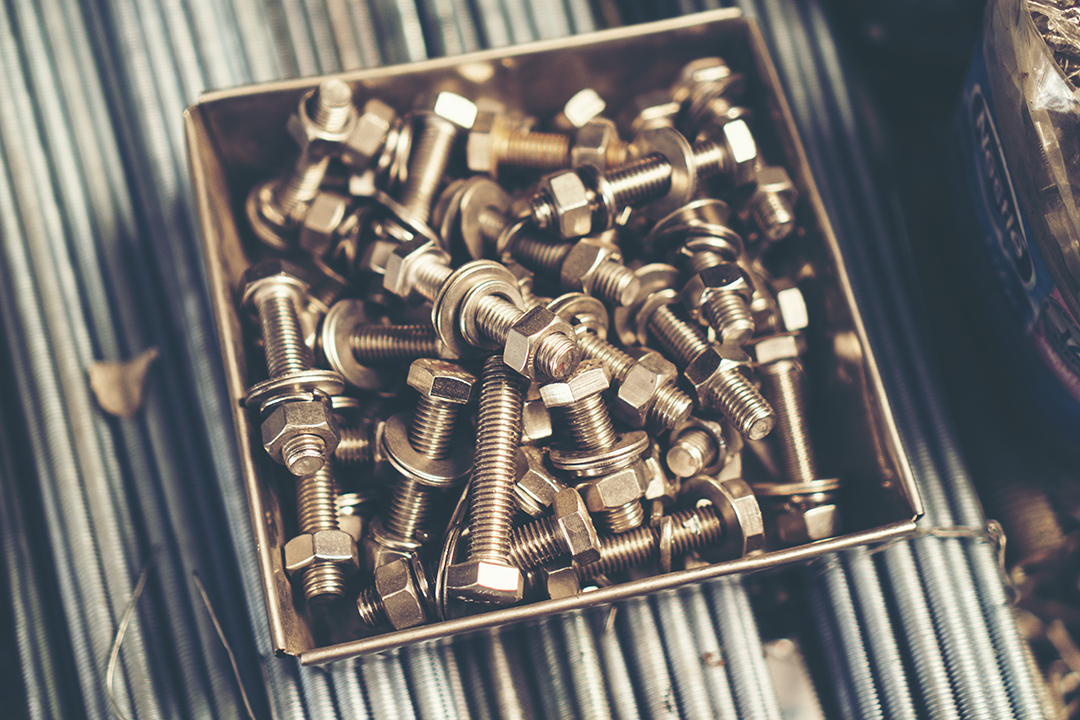B8 bolts, specifically ASTM A193 B8 Class 2 bolts, are essential components in critical industrial applications, including petrochemical plants, oilfields, and refineries. Their durability and strength make them indispensable for ensuring the safety and reliability of heavy-duty equipment and structures. Proper maintenance and inspection of these bolts are critical to avoiding unexpected failures, ensuring operational efficiency, and minimizing costly downtime.
Regular Visual Inspections
One of the simplest yet most effective ways to ensure the reliability of A193 B8 Class 2 bolts is conducting regular visual inspections. This routine process helps identify early signs of damage or wear that may compromise the bolts’ integrity.
Start by checking for common issues during your inspections:
- Corrosion: Check for rust or discoloration, which can weaken the bolt material over time.
- Deformation: Inspect for bending, stretching, or cracking that may result from overloading or improper installation.
- Thread Damage: Look for worn or stripped threads, which can affect the bolt’s ability to hold items in place securely.
To make visual inspections more efficient:
- Develop a routine inspection schedule based on the operating conditions of your machinery or structure.
- Ensure proper lighting and tools, such as magnifying glasses, for thorough inspections.
- Document findings and replace damaged bolts immediately to prevent further issues.
Cleaning and Lubrication
Over time, bolts accumulate dirt, grime, and contaminants that can lead to corrosion and reduced performance. Proper cleaning and lubrication are essential to ensure the long-term reliability of ASTM A193 B8 bolts and prevent premature failures.
To clean your bolts effectively, follow these steps:
- Use a wire brush to remove dirt and debris from the surface of the bolts.
- For heavily soiled bolts, apply a cleaning solution designed to dissolve grease and other stubborn contaminants.
- Ensure the bolts are completely dry after cleaning to avoid moisture-related corrosion.
Lubrication is equally important and should be applied carefully to protect bolts from wear and seizing during use. Here’s how to lubricate your bolts properly:
- Use a lubricant suitable for the environment, such as molybdenum disulfide (“moly”) for high-stress applications or marine-grade lubricants for wet conditions.
- Apply enough lubricant to coat all threads fully. Tighten the bolt until lubricant is visible at the bottom of the nut or bolt, indicating full coverage.
- Reapply lubrication regularly as part of your maintenance routine, particularly in environments prone to high heat, vibration, or corrosive elements.
Proper cleaning and lubrication not only reduce wear but also make bolts easier to maintain, replace, and reuse, ensuring optimal performance across their service life.
Torque Verification
Ensuring bolts are tightened to the correct torque is key for maintaining their integrity and preventing failures. Incorrect torque levels can lead to under-tightening or over-tightening, both of which pose significant risks.
Proper torque levels ensure that the bolt provides the required clamping force without compromising its structural integrity:
- Over-Tightening: This can cause bolts to stretch or deform permanently, reducing their load capacity.
- Under-Tightening: This may result in loose bolts, joint separation, and increased vibration.
To verify torque accurately, follow these steps:
- Use a calibrated torque wrench to ensure accurate measurements.
- Follow the manufacturer’s torque specifications for each bolt type and size.
- Conduct regular torque checks, especially for bolts exposed to dynamic loads or vibrations.
Proper torque verification processes play a vital role in improving bolt reliability and ensuring their long-term durability.
Considering Environmental Factors
The operating environment plays a significant role in the performance and durability of A193 B8 Class 2 bolts. Factors such as temperature, humidity, and exposure to chemicals can accelerate wear and corrosion. By addressing these environmental considerations, you can enhance the bolts’ long-term reliability.
Temperature fluctuations can have a notable impact on bolt integrity:
- High heat may weaken the material over time, particularly if bolts are exposed to prolonged thermal cycles.
- In cold environments, brittleness may develop, especially if improper materials or grades are used.
To mitigate these effects, choose bolts with specifications designed for the operating temperature range and ensure proper material compatibility.
Exposure to chemicals in industrial settings can also lead to corrosion or degradation:
- Ensure that bolts have appropriate coatings, such as zinc or galvanization, to resist chemical damage.
- Regularly clean bolts to remove any chemical residues that could accelerate wear.
Developing a Preventative Maintenance Schedule
Preventative maintenance is key to ensuring the longevity and reliability of ASTM A193 B8 bolts. A well-structured maintenance schedule reduces the risk of unexpected failures and helps maintain operational efficiency.
To build an effective maintenance schedule, consider these steps:
- Base the frequency of inspections on the operational stress and environmental factors affecting the bolts.
- Keep records of each inspection, including findings and actions taken.
- Replace bolts before they reach the end of their service life to avoid sudden failures.
Modern tools can further enhance your maintenance efforts:
- Use ultrasonic testing methods to detect hidden cracks or defects within the bolts.
- Utilize advanced torque wrenches for precise measurements and to maintain consistent bolt tension.
Avoiding Common Mistakes in Bolt Maintenance
Proper maintenance of ASTM A193 B8 bolts is essential for ensuring their long-term reliability, but common mistakes can compromise their performance. Here are some key errors to avoid:
- Neglecting Routine Inspections: Skipping regular inspections increases the risk of undetected damage, such as corrosion, deformation, or thread wear, which can lead to bolt failure. Make inspections a scheduled priority.
- Improper Lubrication Practices: Applying too little or too much lubricant can affect bolt performance. Inadequate lubrication can cause seizing or galling, while excess lubricant may attract contaminants, leading to wear or corrosion.
- Using Incorrect Torque Levels: Failing to follow manufacturer torque specifications can result in under-tightened bolts, causing joint separation, or over-tightened bolts, which may stretch or weaken under stress. Always use a calibrated torque wrench for accuracy.
- Ignoring Environmental Factors: Not accounting for environmental conditions, such as exposure to extreme temperatures or chemicals, can accelerate bolt degradation. Choose bolts with appropriate coatings and materials for their operating environment.
Avoiding these common mistakes helps ensure that B8 bolts maintain their durability, reliability, and effectiveness in industrial applications.
Why Choose Coastal Resource Group for Bolt Solutions?
At Coastal Resource Group, we deliver high-quality solutions for demanding industrial environments like oilfields and petrochemical facilities. Here’s why businesses trust us:
- Reliable ASTM A193 B8 bolts designed to perform under high stress and challenging conditions.
- Wide inventory of industrial supplies including bolts, HDPE pipes, welding equipment, and more to meet diverse project needs.
- Fast and efficient delivery to ensure your projects stay on schedule without delays.
- 24/7 customer support to address supply needs and emergencies at any time.
- Years of industry experience delivering dependable solutions to Texas industries.
Contact us today to learn how we can support your industrial projects with high-quality bolts and fasteners.


